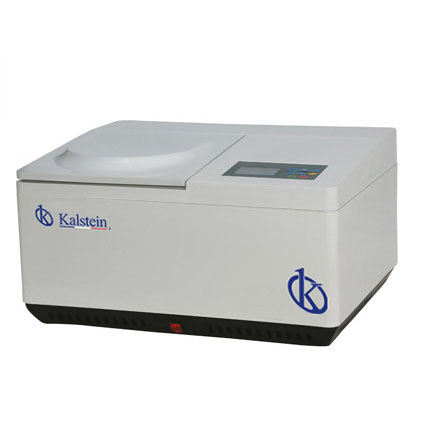The centrifuge is an essential piece of equipment in every laboratory. This equipment generates rotation movements, with the aim of separating the components that constitute a solution. This instrument applies a sustained centrifugal force to push matter away from the center of rotation. The basic components of a centrifuge are: rotor, motor, vacuum chamber, and speed, time and temperature control.
Centrifugation is a technique governed by Stokes’ law, which proposes that particles settle more easily the larger they are in diameter and specific weight, and the lower their viscosity. Centrifugation is used to isolate or concentrate particles suspended in a liquid, taking advantage of the different speed of movement depending on their shape, size or weight when subjected to centrifugal force. Centrifugal force is the force exerted on a body when it rotates around an axis.
Depending on the type of centrifuge will be its operation and characteristics, such as the type of rotor and the type of sample tube. In this article we will address high and low speed centrifuges and their different applications.
High speed centrifuges
High-speed centrifuges are essential equipment for the isolation and characterization of multiple biological structures: from biomolecules, such as nucleic acids and proteins, to cellular organelles.
High-speed centrifuges are specialized centrifuges that reach maximum speeds between 18,000 and 25,000 rpm (they can generate around 60,000 g). They are refrigerated and normally have a vacuum system to avoid heating the rotor. This vacuum system allows them to have a more exact temperature control than those that do not do a vacuum. They are useful in the separation of cell fractions, but insufficient for the separation of ribosomes, viruses or macromolecules in general.
These high-speed centrifuges can come with different adapters to fit sample tubes of various sizes and volumes. The three existing types of rotors can be used in this type of centrifuge.
Low speed centrifuges
These are easy-to-handle and compact centrifuges, that is, they are small-sized centrifuges that do not have refrigeration, so they usually operate at room temperature. It reaches speeds between 4000-5000 rpm. They are used for general laboratory applications, such as separating large particles such as cells, cell suspensions, separating sera, plasma, urine, sperm, among others.
Therefore, they are used in the chemical, environmental, pharmaceutical industry, in clinics and laboratories. They can use tilting and fixed angle rotors.
At Kalstein we are MANUFACTURERS of laboratory equipment and we offer you an excellent range of laboratory centrifuges designed with the highest quality and with the best technology, at the best PRICES on the market. That’s why we invite you to take a look:HERE

